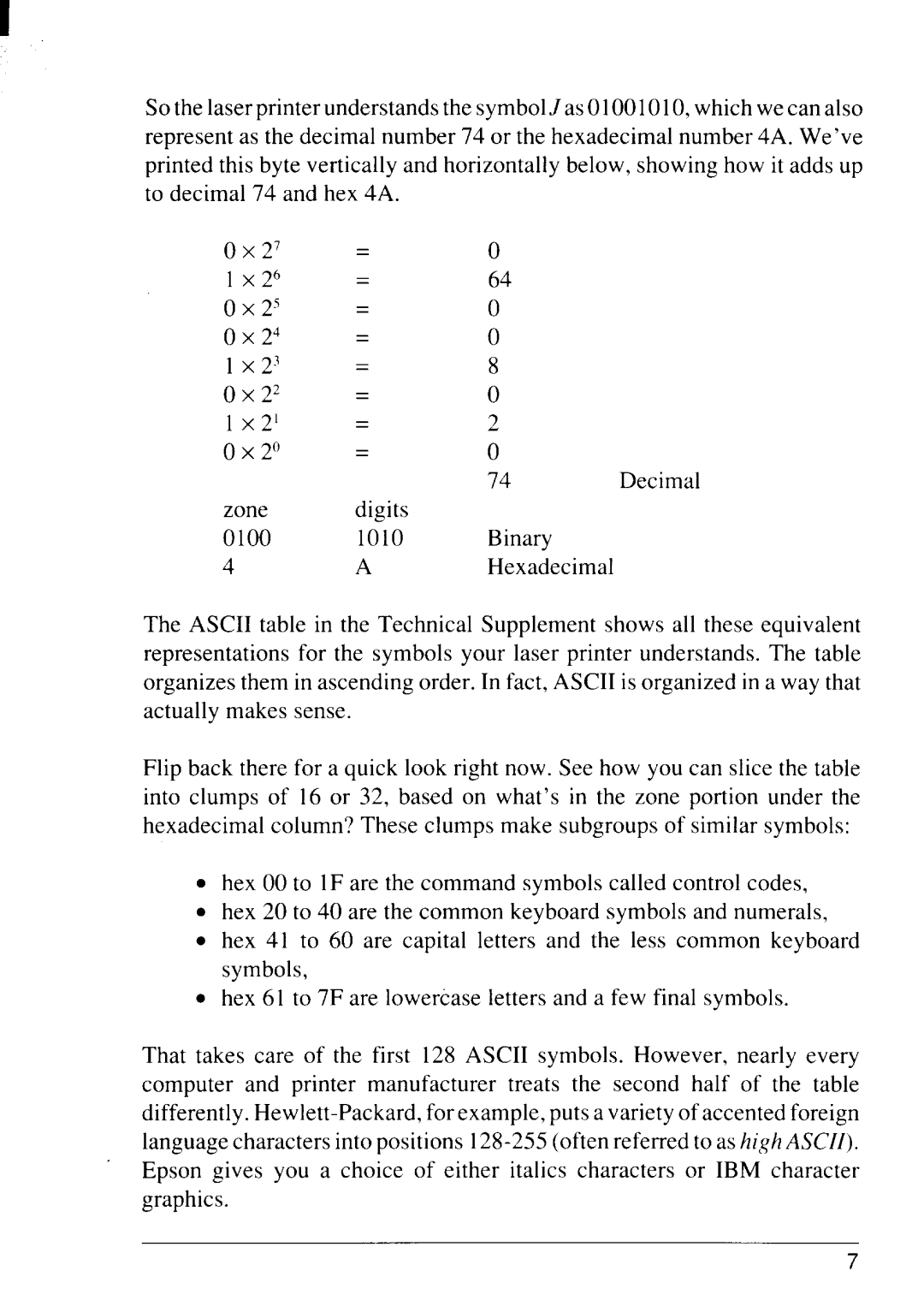
So the laser printer understands the symbolJas 01001010, which we can also represent as the decimal number 74 or the hexadecimal number 4A. We’ve printed this byte vertically and horizontally below, showing how it adds up to decimal 74 and hex 4A.
o x 27 | — | o |
|
1 x 26 | — | 64 |
|
0x 25 | — | 0 |
|
0x 24 | — | 0 |
|
1 x 23 | — | 8 |
|
0x 22 | — | 0 |
|
1 x 2’ | — | 2 |
|
ox 2° | — | 0 | Decimal |
|
| 74 | |
zone | digits |
|
|
0100 | 1010 | Binary |
|
4 | A | Hexadecimal |
|
The ASCII table in the Technical Supplement shows all these equivalent representations for the symbols your laser printer understands. The table organizes them in ascending order. In fact, ASCII is organized in a way that actually makes sense.
Flip back there for a quick look right now. See how you can slice the table into clumps of 16 or 32, based on what’s in the zone portion under the hexadecimal column? These clumps make subgroups of similar symbols:
●hex 00 to 1F are the command symbols called control codes,
. hex 20 to 40 are the common keyboard symbols and numerals,
. hex 41 to 60 are capital letters and the less common keyboard symbols,
. hex 61 to 7F are lowercase letters and a few final symbols.
That takes care of the first 128 ASCII symbols. However, nearly every computer and printer manufacturer treats the second half of the table differently.
7
